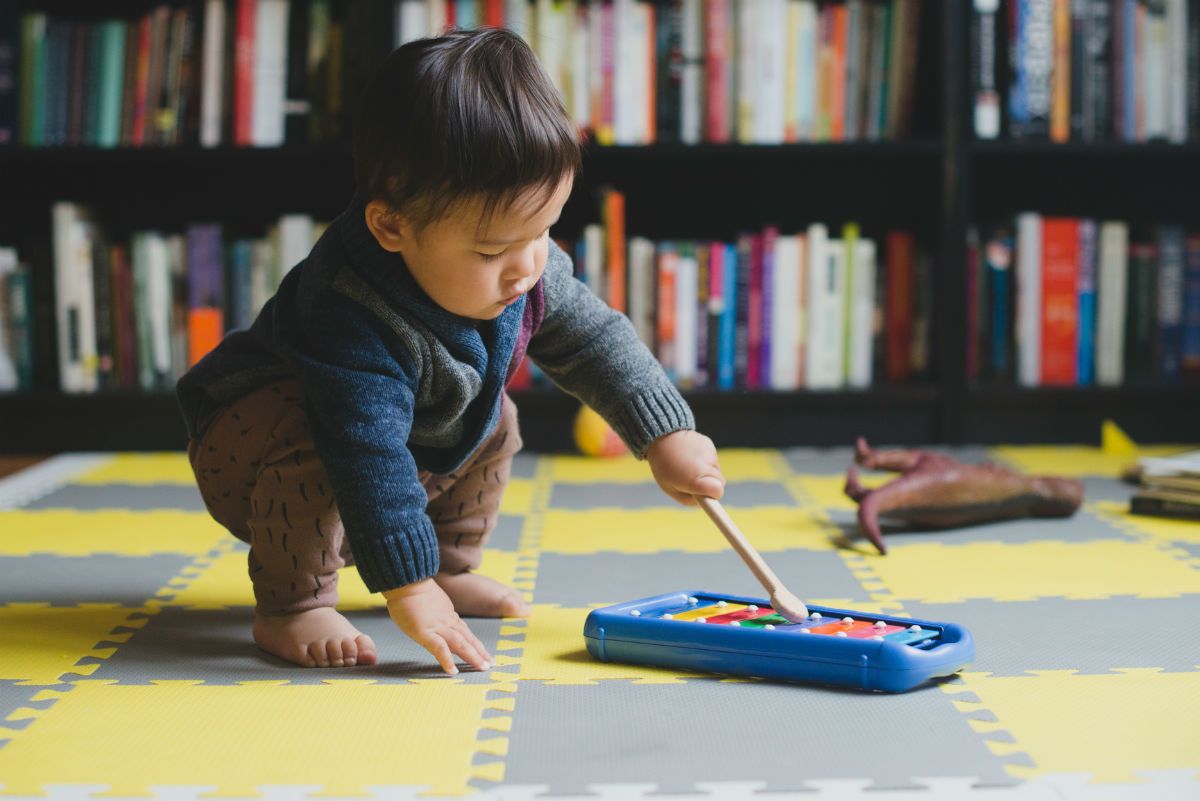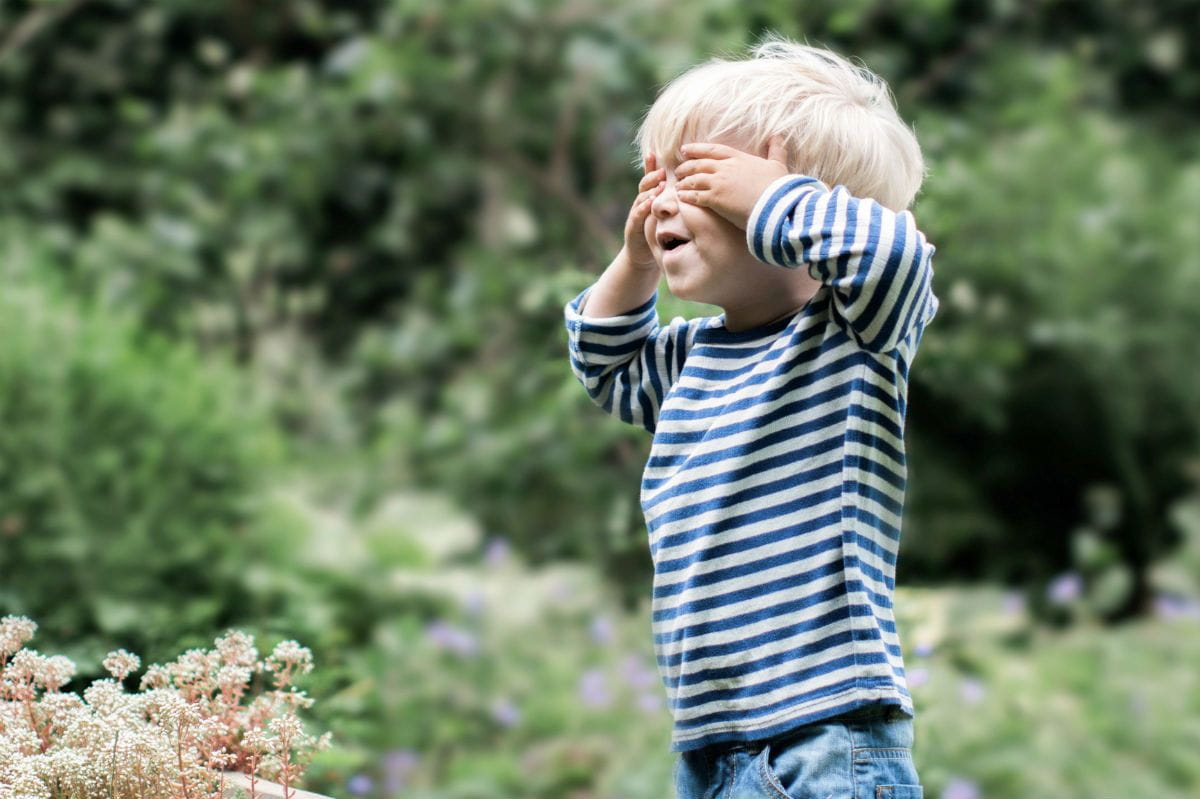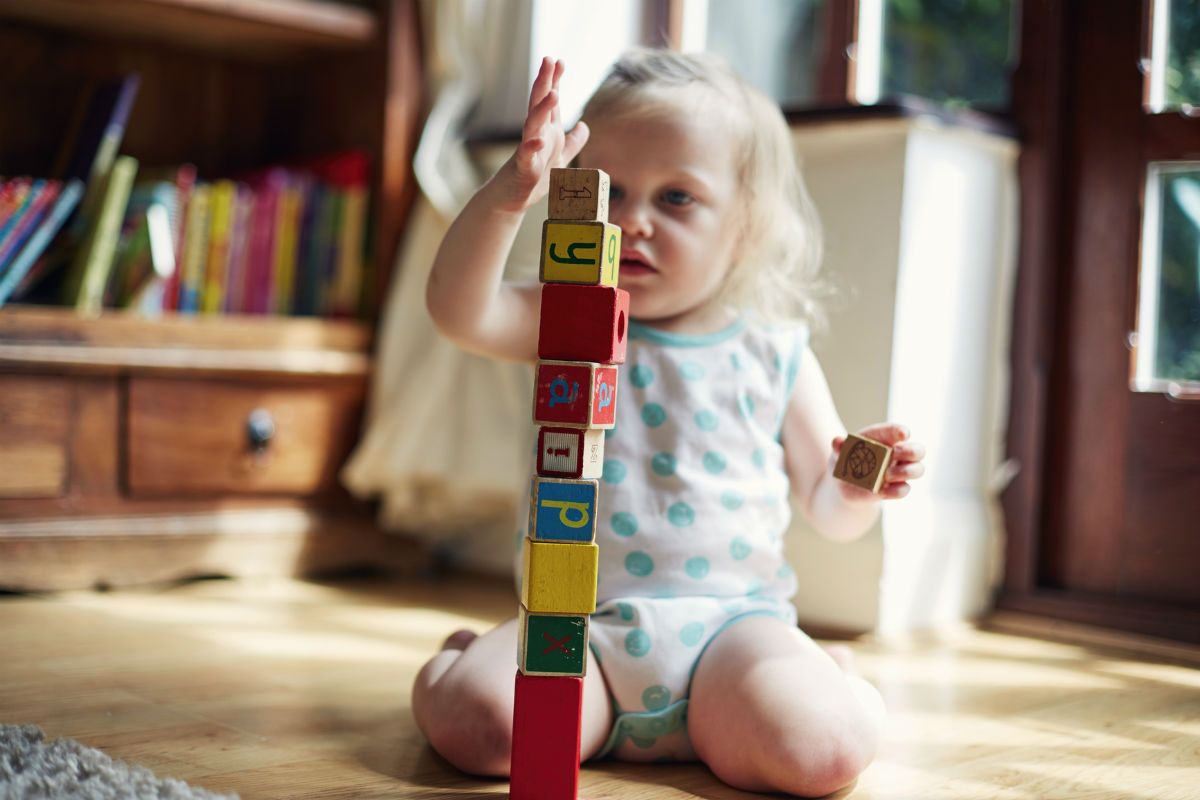The Mind-Body Connection! 6 Activities to Help Kids Build Spatial Awareness

By Cheryl Flanders
You know that moment on the tiny tots’ soccer field, when your four-year-old tries to kick the ball…only to miss entirely? (And you think, how did she manage to miss that!?)
Or when you toss a stuffed animal at your son only to find he tries to grab it a full second too late?
It doesn’t mean your child will grow up to be uncoordinated or isn’t destined to play sports: A lack of coordination (and imperfect timing) are common among young children because they’re still developing something called spatial awareness.
Turns out, it takes a lot of brain power for kids to learn where objects are in relation to their own bodies and how to move their bodies to achieve a desired result (whether whacking a tee-ball, coordinating their limbs to complete a breast stroke, or even tracing a stencil). Hence the missed kicks, near collisions on the playground, and unwanted bruises that come from accidentally running into the living room furniture.
Developing spatial awareness starts early. When a baby makes his first reach for a rattle, he’s learning to gauge distance and how his body moves through space in relationship to three-dimensional objects. He knows that rattle is somewhere out there, but he learns his arm can stretch just so far—so he learns how to adjust his body position to reach it.
While most children will develop spatial awareness on their own, it can be interesting to understand the types of activities that build those neural connections. Here are a few ways that young children can build the kind of brain that helps them be their physical best!
1. Give Your Baby Freedom to Explore
Highchairs and cribs have their place, but babies also need plenty of time (and a safe place) to crawl around and explore their environment. A little exploration helps him figure out where he is in relation to the objects around him and learn concepts like near, far, high, and low.

2. Play Hide-and-Seek Games
Finding a good hiding spot is perfect for developing spatial awareness (and kids love it!). For younger children, you can make the game easier by hiding a stuffed animal or a favorite toy. (Fair warning: Young children will ask to play this over and over and over again!)
3. Fit Things Together and Take Them Apart
Small puzzles, building blocks like Legos or Duplo, or other toys with fit-together pieces are great choices. Whether she’s tackling a puzzle or a miniature tower, start by helping her study the shapes and edges of the pieces to figure out where the pieces might fit with others, and then put it all together. Once it’s complete, let her try taking it apart and putting it together again, this time by herself.
4. Fill Objects and Then Empty Them
Dumping objects and pouring water is great spatial-awareness practice for your toddler. Not only are those experiments helping him learn that sometimes items can fit inside others, they’re also teaching him what happens when he holds the bowl higher or lower before emptying it. Will the objects scatter or land in a pile? (A little perk: These are also pre-science and pre-math skills!)

5. Stack and Rearrange Objects
Arranging objects according to words like “short” and “long” is a big part of spatial awareness, and there’s lots of fun and easy ways she can practice those concepts. Roll playdough into long ropes, and then separate them into short and long pieces. Stack blocks from large to small. What happens if she stacks from small to large?
6. Play Spatial Sports
Soccer, baseball, gymnastics, and dance are all great choices (and even better, these activities keep kids active and healthy). Not only will he have a ball, but things like adjusting his bat to the different positions of a pitched baseball, learning that standing too close on the dance floor means a run-in with someone, or discovering just how hard to kick the soccer ball to make a goal will help him gain valuable spatial=-awareness skills!




